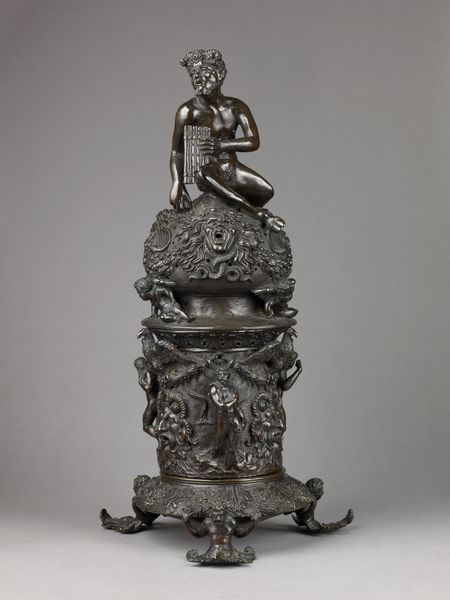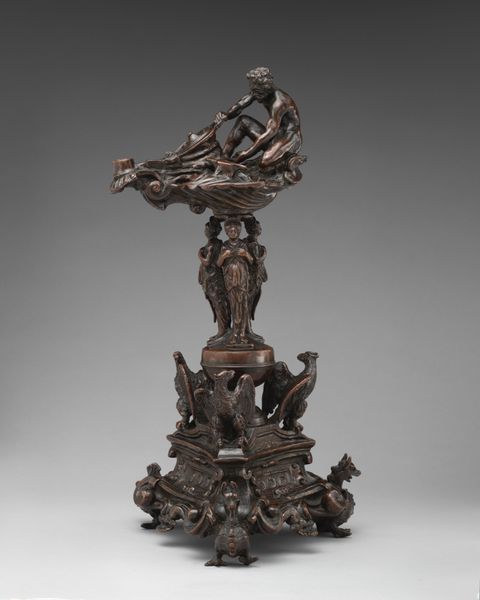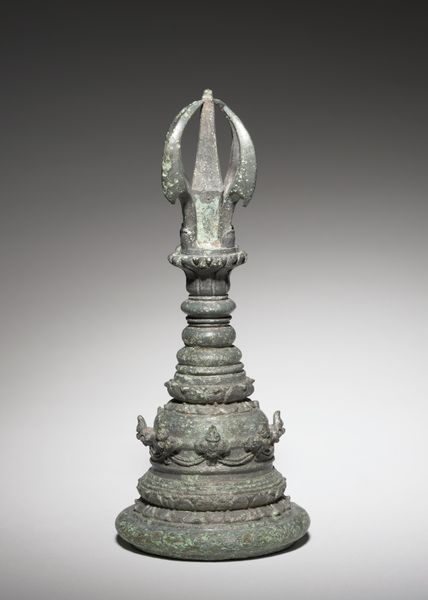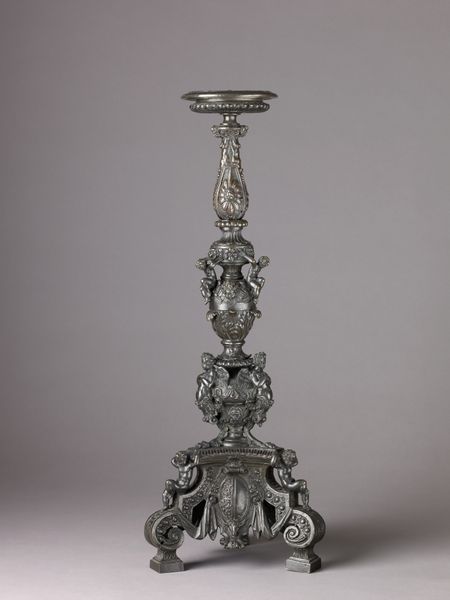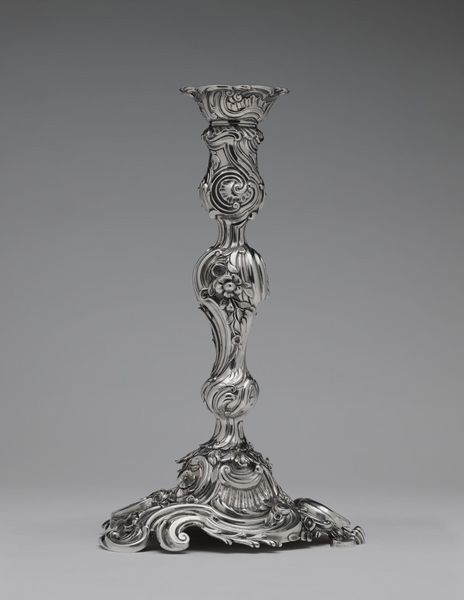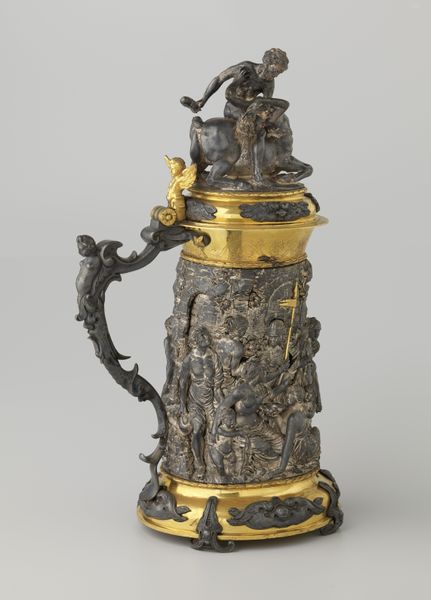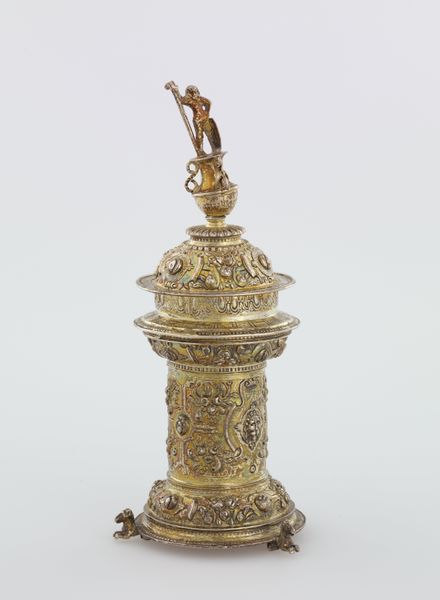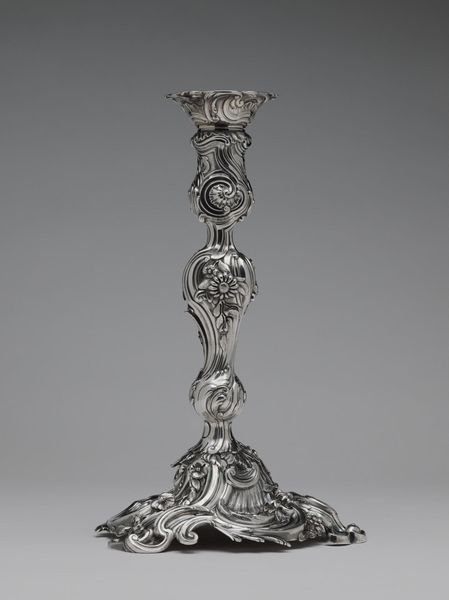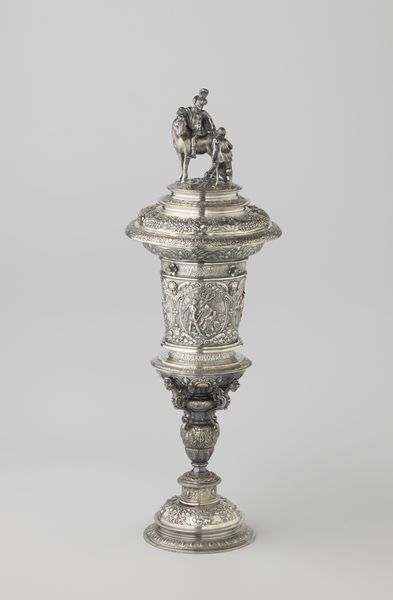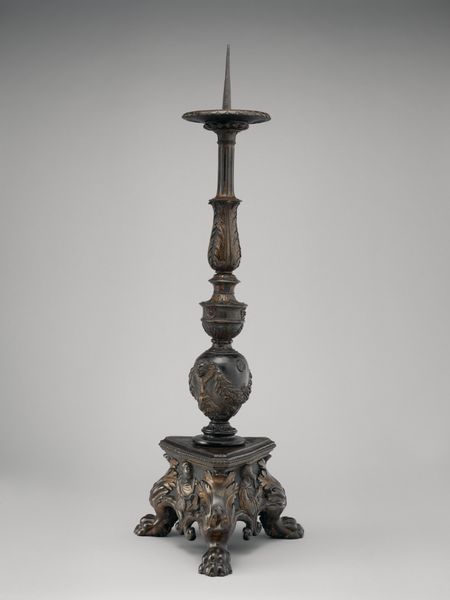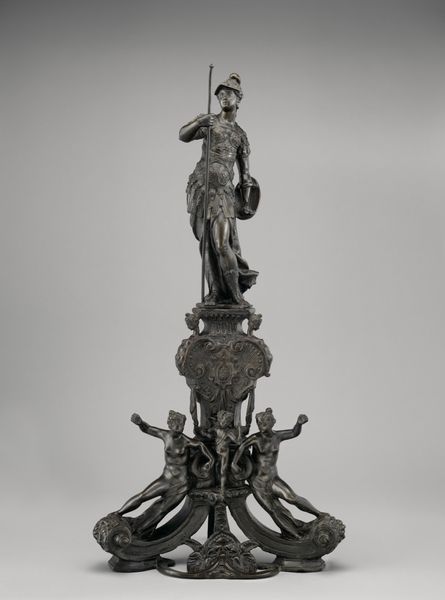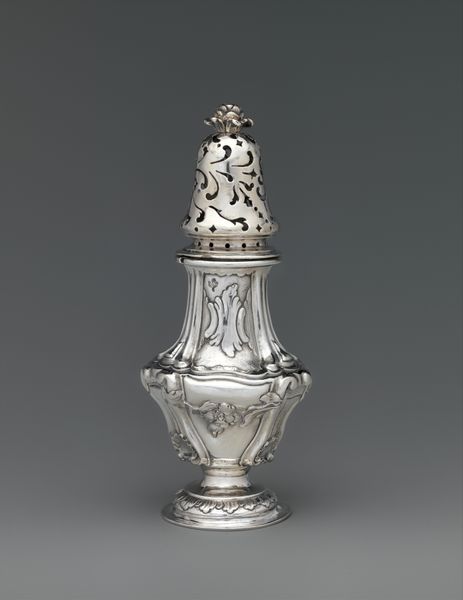
Perfume Burner Surmounted by a Satyr 1527 - 1543
0:00
0:00
bronze, sculpture
#
sculpture
#
fountain
#
bronze
#
figuration
#
11_renaissance
#
sculpture
#
italian-renaissance
Dimensions: H. overall 50 cm, h. of base 10.5 cm; h. of middle section, including bajonet joint, 15.5 cm; h. of cover, including the bajonet joint 26.4 cm.
Copyright: Public Domain
Curator: What a striking object! It's the "Perfume Burner Surmounted by a Satyr," a bronze piece created by Desiderio da Firenze between 1527 and 1543. Editor: Immediately, I’m struck by the visual hierarchy. The satyr perched atop focuses my gaze, almost like a musical note held high above a complex score. The contrasting textures—the smoothness of the satyr against the detailed base—are incredibly engaging. Curator: It really showcases the virtuosity of bronze casting during the Italian Renaissance. Think about the workshops where this piece was conceived—the collaborative effort involved in modeling, casting, and finishing such an intricate object. Editor: Indeed, the workmanship is undeniable. However, my focus is on the semiotics at play: The satyr, traditionally a symbol of hedonism, crowns what is essentially a functional object, a perfume burner. The contrast seems purposeful, a tension between pleasure and utility. Curator: Absolutely. And consider the social context: perfume burners were luxury items, signifying wealth and status. Owning such an elaborately decorated piece underscored a patron’s taste and resources. It was both a functional object and a potent symbol of power and luxury, intended for elite consumption. Editor: The interplay of textures, from the rough hair of the satyr to the smooth finish of its instrument, guide the eye and lend tactile value to the smooth coolness of bronze. But why this form? Curator: The imagery aligns with the Renaissance fascination with classical antiquity, so, it reflects how patrons wanted to see themselves: sophisticated, worldly, connected to the past, as that period embraced new modes of production. Editor: I agree. By understanding the structure and symbolism inherent in this piece, we see how its construction gives form to an ethos, the Renaissance worldview that blends sensual indulgence and cultivated refinement. Curator: Examining the materiality allows us to consider artistic patronage and the circulation of such pieces during the early modern period and offers insights into Renaissance social structures. Editor: True. Looking closely lets us decode those Renaissance sensibilities encoded in line and form. Curator: Exactly, now both elements connect, providing a comprehensive interpretation of its artistry.
Comments
No comments
Be the first to comment and join the conversation on the ultimate creative platform.
